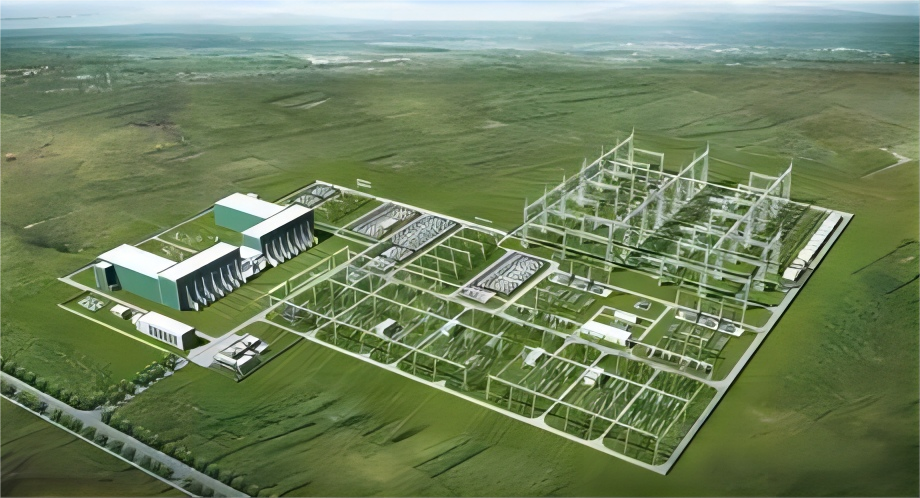HVDC converter station
Substation, a place where voltage is changed. In order to transmit the electric energy generated by the power plant to a far place, the voltage must
be increased and changed into high voltage, and then the voltage must be reduced as required near the user. This work of voltage rise and fall is
completed by the substation. The main equipment of the substation is switch and transformer.
According to the scale, the small ones are called substations. The substation is larger than the substation.
Substation: generally step-down substation with voltage level below 110KV; Substation: including “step-up and step-down” substations of
various voltage levels.
Substation is a power facility in the power system that transforms voltage, receives and distributes electric energy, controls the direction of power
flow and adjusts voltage. It connects the power grid at all levels of voltage through its transformer.
The substation is the conversion process of AC voltage level (high voltage – low voltage; low voltage – high voltage); The converter station is the
conversion between AC and DC (AC to DC; DC to AC).
The rectifier station and inverter station of HVDC transmission are called converter stations; The rectifier station converts AC power into DC power
output, and the inverter station converts DC power back to AC power. Back-to-back converter station is to combine the rectifier station and inverter
station of HVDC transmission into one converter station, and complete the process of converting AC to DC and then DC to AC at the same place.
Advantages of converter station
1. When transmitting the same power, the line cost is low: AC overhead transmission lines usually use 3 conductors, while DC only needs 1 (single pole) or 2
(double pole) conductors. Therefore, DC transmission can save a lot of transmission materials, but also reduce a lot of transportation and installation costs.
2. Low active power loss of the line: because only one or two conductors are used in the DC overhead line, the active power loss is small and has the “space charge”
effect. Its corona loss and radio interference are smaller than those of the AC overhead line.
3. Suitable for underwater transmission: under the same conditions of non-ferrous metals and insulating materials, the allowable working voltage under DC is
about 3 times higher than that under AC. The power transmitted by the DC cable line with 2 cores is much greater than that transmitted by the AC cable line with 3
cores. During operation, there is no magnetic induction loss. When it is used for DC, it is basically only the resistance loss of the core wire, and the aging of insulation
is also much slower, and the service life is correspondingly longer.
4. System stability: In the AC transmission system, all synchronous generators connected to the power system must maintain synchronous operation. If the DC line
is used to connect two AC systems, because the DC line has no reactance, the above stability problem does not exist, that is, the DC transmission is not limited by
the transmission distance.
5. It can limit the short circuit current of the system: when connecting two AC systems with AC transmission lines, the short circuit current will increase due to the
increase of system capacity, which may exceed the quick-break capacity of the original circuit breaker, which requires replacing a large number of equipment and
increasing a large amount of investment. The above problems do not exist in DC transmission.
6. Fast regulation speed and reliable operation: DC transmission can easily and quickly adjust active power and realize power flow reversal through thyristor converter.
If a bipolar line is adopted, when one pole fails, the other pole can still use the earth or water as the circuit to continue to transmit half of the power, which also improves
the reliability of operation.
Back-to-back converter station
Back-to-back converter station has the most basic features of conventional HVDC transmission, and can realize asynchronous grid connection. Compared with
conventional DC transmission, the advantages of back-to-back converter station are more prominent:
1. There is no DC line and the DC side loss is small;
2. Low voltage and high current operation mode can be selected at DC side to reduce the insulation level of converter transformer, converter valve and other related
equipment and reduce the cost;
3. The DC side harmonics can be completely controlled in the valve hall without interference to the communication equipment;
4. The converter station does not need grounding electrode, DC filter, DC arrester, DC switch field, DC carrier and other DC equipment, thus saving investment
compared with conventional high-voltage DC transmission.
Post time: Feb-17-2023

